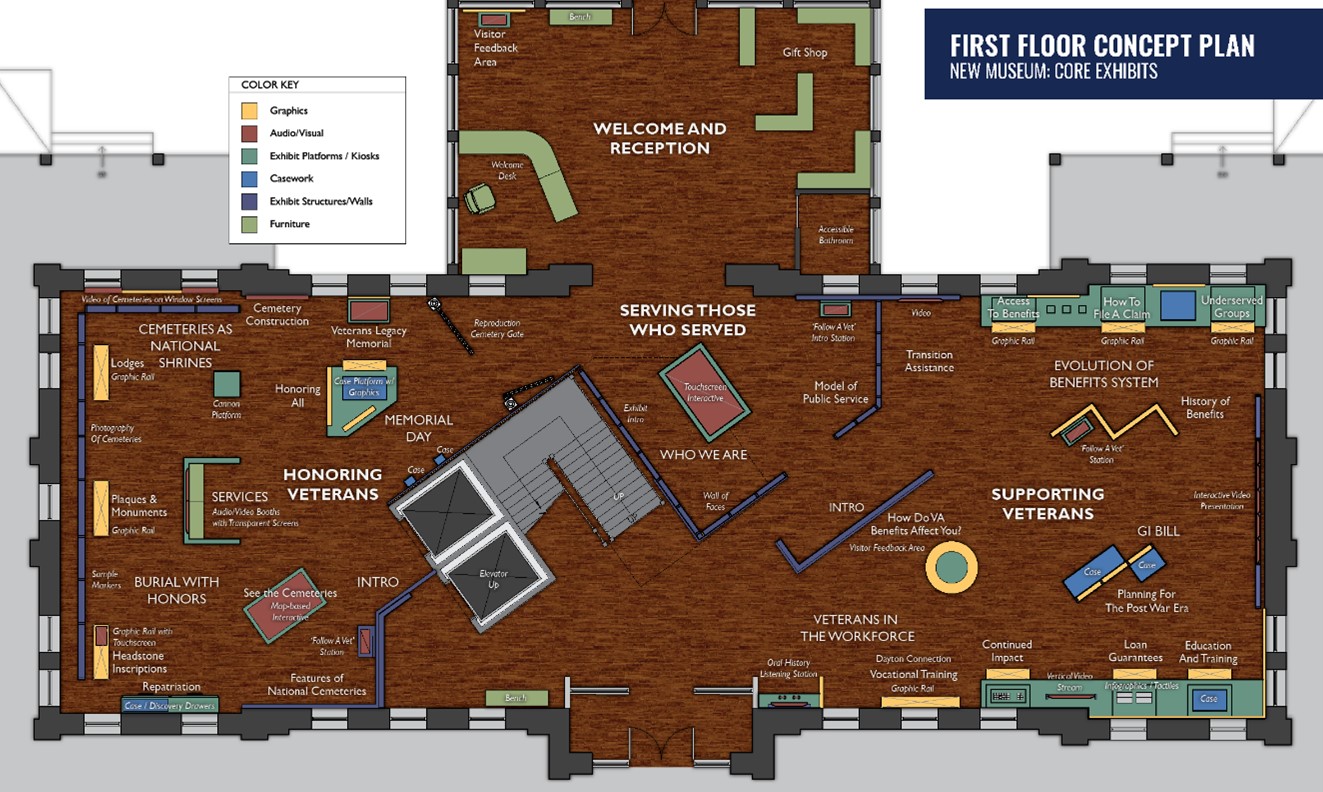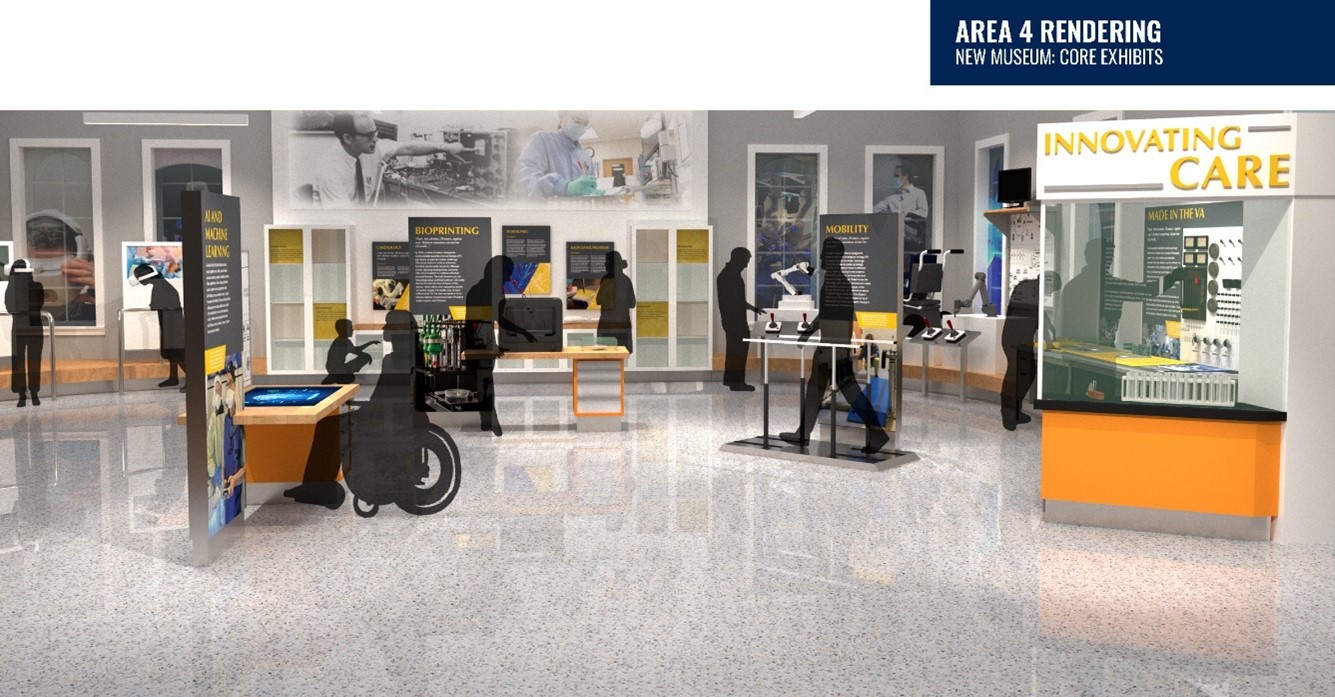
In December of 2022, the National VA History Center’s (NVAHC) Core Project Team completed the Interpretive Master Plan (IMP). The document was the culmination of an 18-month process working with a variety of internal and external stakeholders for the stories we will tell and how we will engage with you to tell them. Leading this process was a privilege, and it was both challenging and rewarding. I had the difficult task of trying to choose the most important themes from the thousands of possibilities across an agency as large as the VA. Healy Kohler Designs used our initial ideas and developed them into a comprehensive document.
It was an honor to work with passionate and talented individuals collaborating to develop this IMP. This IMP serves as the basis for the development of the museum and the exhibits and programs that it shares with visitors. It is 58 pages, so you may just want to look at the floor plans and renderings.

Now that the IMP is finished, we are starting to develop some of the visitor engagement plans. We are currently working on additional interpretive panels for the Dayton campus. With VA IT and contracting, we are developing an Augmented Reality tour application to engage visitors using their personal mobile devices. The application will use Augmented Reality to superimpose historic images over the current landscape, showing what the campus used to look like. It will also use holograms of key figures in the history of the home to tell interesting stories. The app will feature wayfinding and interactive maps. We plan to expand this application to other VA facilities once we implement the lessons learned.
We are also exploring the development of a Virtual Museum. This online version will allow access to the museum for everyone with an internet connection. It should be available prior to the physical museum, and it allows us to tell stories that may not fit within the museum. This Virtual Museum offers a great deal of flexibility in storytelling. These projects will require the digitization of our collections for use in the application and virtual museum.
Plans are also being developed for the Putnam Library (Building 120) to serve as the first public space for the NVAHC. Currently, those plans include a research room and archival exhibits. These projects are a few of the things we are working on. The next Curator Corner will share our move to building 126 and its impact on the NVAHC.
By Kurt Senn
Curator, National VA History Center
Share this story
Related Stories

Curator Corner
Bringing them Home: America’s WWII Burial Program
VA History is defined by public service to those who have fought for this country. For nearly 250 years, Americans have responded to the challenges Veterans face in innovative ways. But what happens for those who do not return home? This is the story of three Americans who paid the ultimate sacrifice fighting fascism in Europe, how each one was honored after death, and how the VA History Office is preserving their story.

Curator Corner
The Story Behind the National Homes’ Seal
The National Home for Disabled Volunteer Soldiers turns 160 years old in 2025. The campuses are the oldest in the VA system, providing healthcare to Veterans to this day.
At the time of their establishment, they were the first of their type on this scale in the world. Within the NHDVS seal is the story that goes back 160 years ago.



